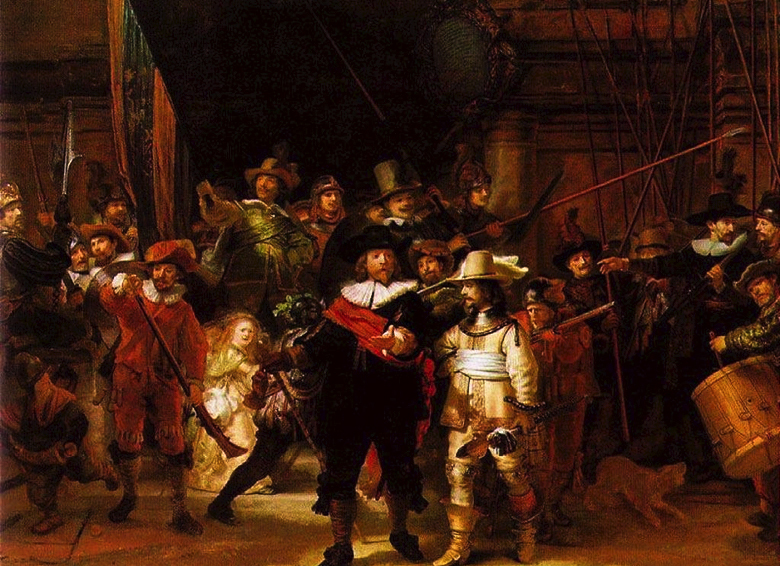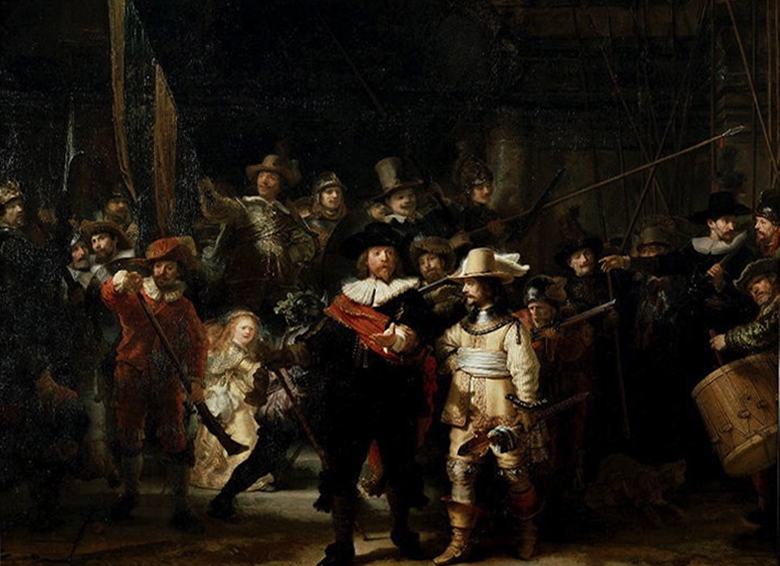A True Short Story
The ever-mystifying painting entitled Night Watch was completed in 1642 by the prolific Dutch painter Rembrandt van Rijn. It was commisioned by the Amsterdam militia to be hung along with seven other group portraits in Kloveniersdoelen, the headquarters of various musketeer companies. Its open composition is a united conglomeration of seventeenth-century watchmen whom are standing in no particular order, suggesting a realistic and believable scene. The figures themselves, thirty-four of them, are life-size. Rembrandt earned 1600 guilders to paint the prominent life-size men, and was offered even more contribution from certain men depending on their prominence in the composition.
Fooled by layers of varnish that had covered and disguised the painting over time, nineteenth-century art historians gave Rembrandt’s painting the title Night Watch. The painting’s original seventeenth-century title, The Militia Company of Captain Frans Banning Cocq and Lieutenant Willem van Ruytenburch, identifies the two men in the foreground. A contemporary inscription states that Cocq is ordering lieutenant Willem van Ruytenburch, in white, to lead the company out; it is believed by many historians that the watchmen are preparing for an excursion, perhaps for the visit to the city of the French Queen Mother Marie de Medicis in 1638.
Through centuries of wear-and-tear, including moves to different locales, the painting lost certain areas of the original composition. In 1715, a large section of about 60cm/2ft sq was cut off from the left side when it was moved to Amsterdam’s Town Hall. Almost a century later in 1808, the painting was moved to its current location in the Rijksmuseum in Amsterdam. The right hand side and bottom of the painting have been cut out as well; fortunately, painter Gerrit Lundens created a smaller copy of the complete original, now hanging in the London National Gallery. This recreation reveals the beginnings of a bridge which would have been in the foreground.
After several cleanings, Night Watch has been restored to Day Watch. The original composition is known and Rembrandt’s vision is more clearly identified. The purpose of the figures is revealed, entirely altering the initial nineteenth-century perception of Rembrandt’s Night Watch.

By Bailey Dolenc

